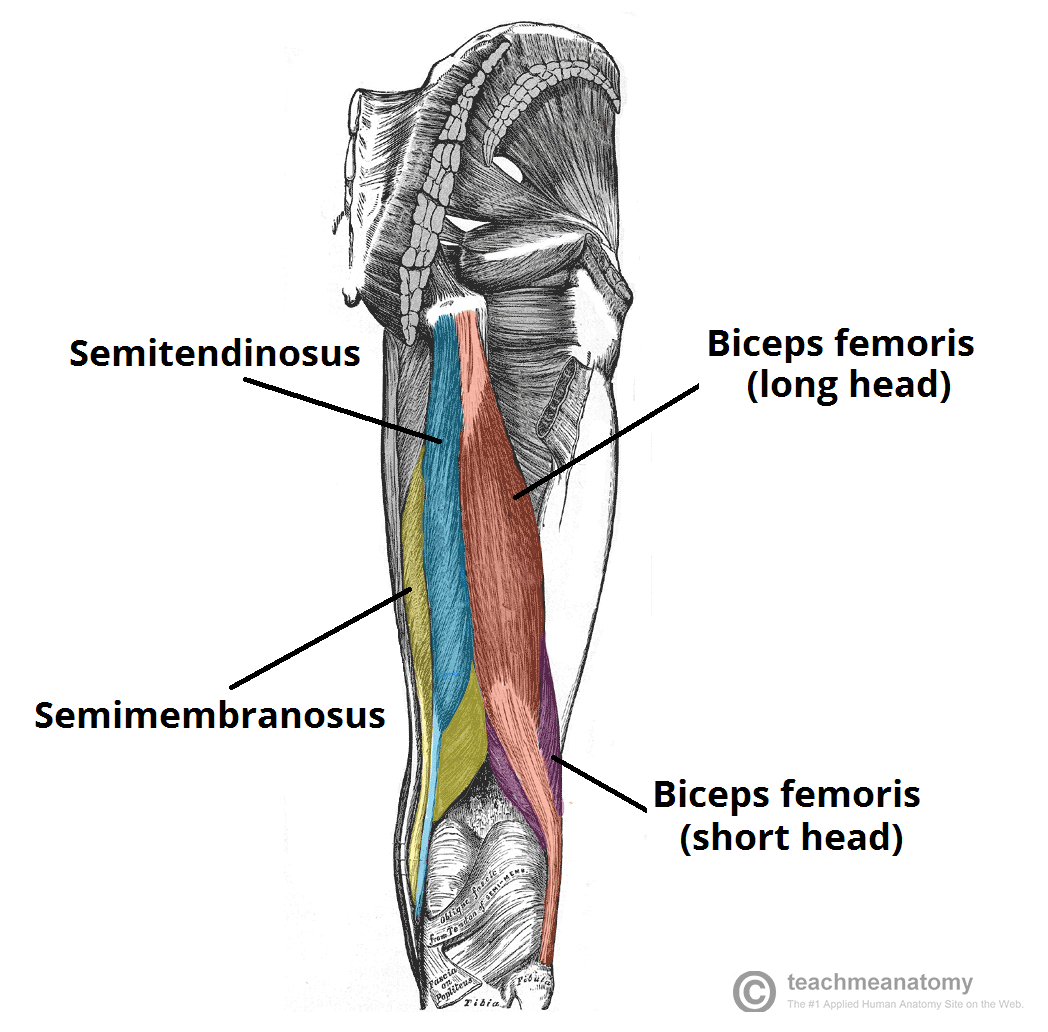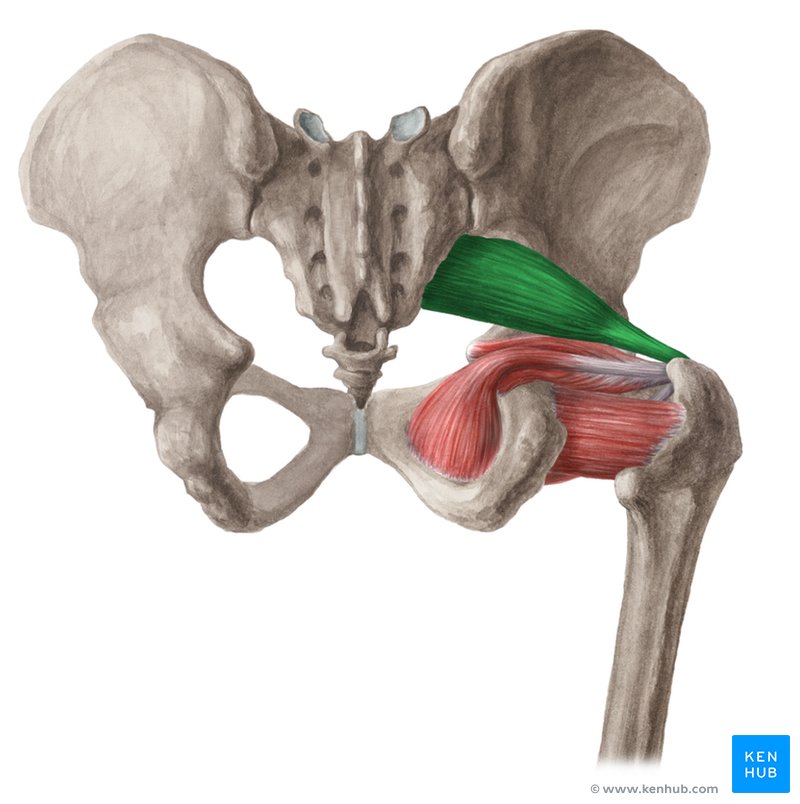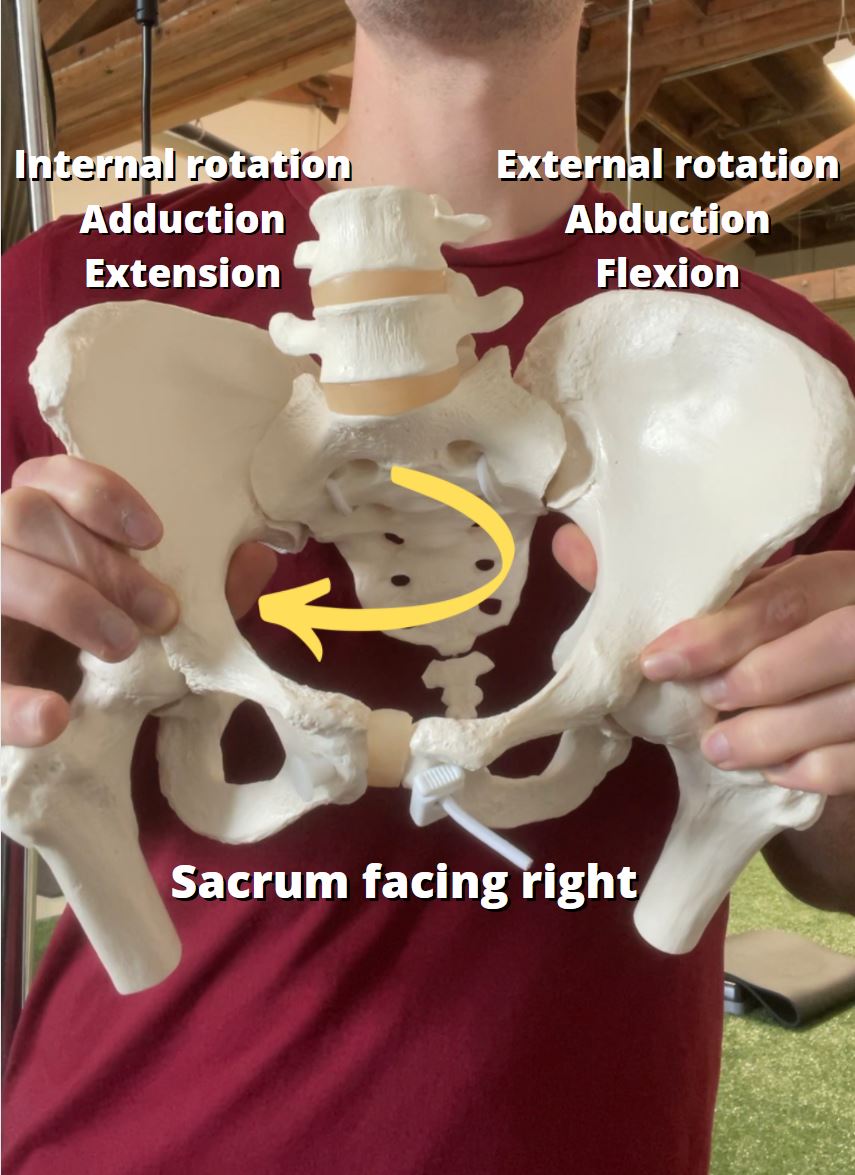A Guide to Fixing the Root Cause of Piriformis Syndrome & Tight Glutes - How to Stretch the Back of Your Hips
Nov 11, 2021
Piriformis Syndrome and/or tight glute muscles can be a real pain in the…. Okay, I’ll spare you the cheesy pun.
If you'd rather watch than read, see the video below. Just know more detail and exercises are below in the article!
While we are technically going to "stretch" and put those tissues in an elongated position, we are going to do much more than that.
In fact, I couldn’t care less about the stretch part of it compared to how we can educate your Piriformis and glutes to work properly so they don’t have a reason to be tight in the first place.
In this article I’m going to cover:
- How our rear hips can become tight over time
- How to assess for tight piriformis and glutes
- Exercises to relieve tension and improve function & mobility
Is it really the Piriformis’ fault for being tight?
If you’ve ever read an article or content by me, then you know I believe muscles are simply operating how they can given the position of joints.
Let’s break that down.
The piriformis muscle, as well as many of the posterior (back) hip muscles, are involved in creating a position of pelvis where the outlet (bottom bowl of the pelvis) is in a narrow position.
When these muscles contract, they close the space between the sacrum (middle pelvic bone) and the innominate bone (outer pelvic bone):
Over time, this can lead to potential compression of the Sciatic nerve, resulting in Sciatica issues.

If the pelvis lacks the variability to open and close that space, the muscles on the back side of the pelvis have no choice but to become, and stay, in a shortened orientation/length.
“How does this happen?” You might ask.
Well, this answer isn’t very sexy, but the truth is it comes from the following:
- Sitting poorly and for too long
- Not moving, or lacking consistent daily movement, in all three planes of motion
- Genetics of bone structure and joint position
The good news is, we can influence this and restore variability in an effective, quick manner for the overwhelming majority of these types of issues.
How You Can Verify You Have Tight Hips
The two assessments I am going to use for this are the following that test for if you can even create that space in your pelvic outlet in the first place. You can read more about these biomechanics in this article here.
Active Hip Extension
This test assess for hip extension, which requires that space to open as you get your leg in-line with your hip and shoulder. If you can’t do that, that’s an indication you have tightness in the back of your hips.
Straight Leg Raise
In order for you to get beyond about 45 degrees of a straight leg raise, and up to about 70-80 degrees, you need to create that space between your sacrum and innominate bone.
This means that if you have a straight leg raise less than 80 degrees, you probably have some work to do. If you have 45 degrees or less, you have a lot of work to do because your pelvis lacks the ability to open up down there and your piriformis and other deep tight posterior pelvic muscles are too tight.
Exercises For Piriformis Syndrome & Tight Hips
So if this is you, we need to be able to open up that space. I like to start in static, ground-based positions that allow us to open up that space. Biomechanically speaking, this happens the most at 90 degrees of hip flexion, meaning the thighs are parallel to the floor.
This is where the bottom of those pelvic innominate bones abduct (move away from the sacrum) maximally.
Muscles that helps us do that primarily are the:
- Adductors

- Inner Hamstring muscles (Semitendinosus and Semimembranosus)

I recommend starting with a sidelying 90/90 position with a very light ball squeeze to open up that area:
Please do not squeeze the ball more than a 4/10 intensity. If you do, you will just tighten everything up around that area, including muscles that want to take over for the role of weak adductors and hamstrings, so less is more here. A light squeeze is all you need.
Following that, I recommend trying a standing-supported posterior capsule stretch where we are opening that space (this is a modified technique of Postural Restoration Institute®):
Technique used with permission. Copyright © Postural Restoration Institute®2022. www.posturalrestoration.com
If you watch those videos, you’ll notice I reference a weird stretching sensation in the back of your hip, unlike anything you’ve probably experienced before. As long as it is a stretch, and not painful or discomforting (please, please don’t do it if you feel that), it’s a good thing. What is happening is that your femur (leg bone) is moving back in your hip socket to allow for the opening up that space in your back hips:
If you want to open up that space even more, try a more staggered-stance like below, but proceed with caution, as some people aren’t ready for this right off the bat (this is a modified technique of Postural Restoration Institute®):
Technique used with permission. Copyright © Postural Restoration Institute®2022. www.posturalrestoration.com
You can then progress that to a dynamic variation supported with a TRX (or bands if you don’t have a TRX):
If you do not feel this stretch, don’t fret. About 20% of people can’t feel this immediately (I was one of them personally), but you can try the following posterior hip capsule stretch which is a little more complex, but should give you the sensation you’re looking for (this is a modified technique of Postural Restoration Institute®):
Technique used with permission. Copyright © Postural Restoration Institute®2022. www.posturalrestoration.com
If you need to start here, use this for a week or two then progress to the first standing, lateral shift, and you should be better able to feel the right things.
After each of these drills, re-test your assessments and ensure they feel better and/or range of motion is improving so you know they are working.
Also, don't forget to load! As always, I am a fan of loading these positions after we open up the space for the joints to move more freely so we can "own" the new range of motion under stress (load):
This type of squat biases the 90 degrees of hip flexion zone mentioned earlier, while using the ball to bias an open outlet position of the pelvis.
Hinge positions also bias a lot of opening of the pelvic outlet, but also are harder to execute properly. You can read more about this type of exercise here. Use this as a progression once your straight leg raise is around 60 degrees or more:
Asymmetrical Considerations
The body is inherently asymmetrical, and I go into much more detail about that in this article, but the point is that there may be differences for why you experience this issue on the left or right side.
Because the pelvis is naturally more biased towards the outlet being closed on the left side, the above exercises tend to work really well for that side in particular. But for many, the right side tends to be in more of a position of a relatively more open position. So why would these muscles get tight on the right side?
As mentioned earlier in the article, if there is anterior pelvic tilt on both sides of the pelvis (usually with the left being relatively more than the right), then the right hip can still experience these issues. However, the Piriformis on the right side actually can have leverage to "take over" or compensate for a lack of function within the right Glute Max.
When the right glute max is ineffective in it's job to create that closing of the outlet, then the Piriformis has more leverage to work overtime to do that. Therefore, we still want to open that space in many cases, but also then re-educate the right glute to function properly with something like this:
Technique used with permission. Copyright © Postural Restoration Institute®2022. www.posturalrestoration.com
If you're looking for more strategies to improve movement to help your clients feel great, check out my free webinar: 5 Strategies To Help Your Clients Feel 85% Better Immediately
Summary
To summarize, tight rear hips and/or Piriformis Syndrome are not just a muscular issue, just like most seemingly muscular-related issues.
If we can create the necessary space, and therefore joint variability, to improve range of motion, then we can use the muscles responsible for creating that space effectively.
Most of these exercises are not easy at first, so please start at the first progression and work your way up from there. Skipping more static positions might cost you in the long run.
Be sure to test and re-test! Film yourself if you want to know for sure if you are progressing.
Don’t miss out on free education
Join our email list to receive exclusive content on how to feel & move better.



